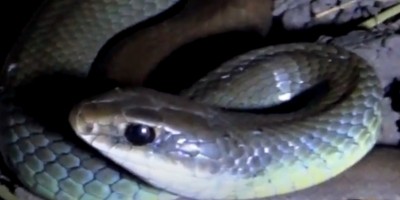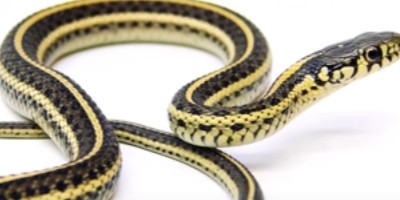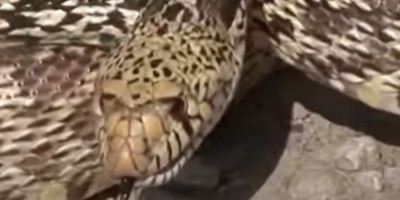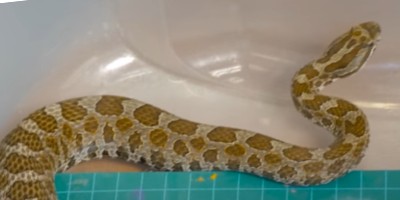
Welcome to coloradospringssnakes.com! I am David, a snake enthusiast living in Colorado Springs, CO. Many people don't know that Colorado Springs is in fact full of snakes! You just need to know where to find them - they can often be shy and elusive. Some Colorado snake species are more common outside of the city limits, in different parts of El Paso County CO, but many types of snakes are indeed common in the more urban parts of Colorado Springs. This guide is meant to help educate you about the beautiful snakes of Colorado Springs, and to help you identify the most common snakes of Colorado Springs, as well as the venomous snakes of Colorado Springs that you should learn to recognize and avoid. If you want more detail, click here for my complete list of ALL snake species in Colorado Springs. Remember the following:
- Most snakes of Colorado Springs are harmless and don't want to encounter you
- Venomous snakes exist but are uncommon in Colorado Springs, Colorado
- Snakes eat rats and mice and are a valuable part of the Colorado ecosystem
- Never kill a snake - if you leave a snake alone, it will leave you alone.
Common Snake Species in Colorado Springs
 Western Yellow-bellied Racer:
Also known as the western racer, the western yellow-bellied racer (Coluber constrictor Mormon) is a long, slender, non-venomous snake commonly found throughout the western United States. These snakes venture as far south as Mexico, and their range reaches as far north as British Colombia. Their bodies are a blend of greens, blues, and browns, with a distinctive namesake: the yellow belly. In total, they grow up to a remarkable 55 inches in length. Preferring open habitats, the western racer thrives in dry open upland forests, grasslands, and shrubby habitats that are found throughout western North America. Their diets are broad, including anything from insects, frogs, lizards, birds, and small mammals.
Western Yellow-bellied Racer:
Also known as the western racer, the western yellow-bellied racer (Coluber constrictor Mormon) is a long, slender, non-venomous snake commonly found throughout the western United States. These snakes venture as far south as Mexico, and their range reaches as far north as British Colombia. Their bodies are a blend of greens, blues, and browns, with a distinctive namesake: the yellow belly. In total, they grow up to a remarkable 55 inches in length. Preferring open habitats, the western racer thrives in dry open upland forests, grasslands, and shrubby habitats that are found throughout western North America. Their diets are broad, including anything from insects, frogs, lizards, birds, and small mammals.
 Plains Black-headed Snake:
The plains black-headed snake (Tantilla nigriceps) are small snakes growing no longer than 15 inches. Their bodies are orange or pink, with a white underbelly. Their heads are a characteristic black, as is their namesake. You’ll find these creatures in rocky or grass prairies. They like a moist environment, so on occasion, they can even be found in basements. These creatures are renowned for their secretive nature, burrowing or slithering beneath the leaf litter. There they hunt for small insects and invertebrates, such as centipedes, worms, spiders, and more. They are non-venomous and pose no threat to humans.
Plains Black-headed Snake:
The plains black-headed snake (Tantilla nigriceps) are small snakes growing no longer than 15 inches. Their bodies are orange or pink, with a white underbelly. Their heads are a characteristic black, as is their namesake. You’ll find these creatures in rocky or grass prairies. They like a moist environment, so on occasion, they can even be found in basements. These creatures are renowned for their secretive nature, burrowing or slithering beneath the leaf litter. There they hunt for small insects and invertebrates, such as centipedes, worms, spiders, and more. They are non-venomous and pose no threat to humans.
 Bullsnake:
Bullsnakes (Pituophis catenifer sayi) are one of the largest snakes in all of North America. At their greatest, they reach a phenomenal 8 ft. in length, making them longer than some cars. However, most bullsnakes range from 4 to 6 ft. Their large size and powerful, muscular bodies make them ferocious predators. By constricting their prey to death, they feast upon everything from mice, moles, and rats, to lizards, rabbits, and birds. They’ll even eat rattlesnakes and so are often seen as pest management. To spot a bullsnake: look for the yellow, brown, white, or black blotching, as well as the bands of black on the tail. They’re easily mistaken for rattlesnakes, and so are sometimes killed. But are harmless and can even be helpful.
Bullsnake:
Bullsnakes (Pituophis catenifer sayi) are one of the largest snakes in all of North America. At their greatest, they reach a phenomenal 8 ft. in length, making them longer than some cars. However, most bullsnakes range from 4 to 6 ft. Their large size and powerful, muscular bodies make them ferocious predators. By constricting their prey to death, they feast upon everything from mice, moles, and rats, to lizards, rabbits, and birds. They’ll even eat rattlesnakes and so are often seen as pest management. To spot a bullsnake: look for the yellow, brown, white, or black blotching, as well as the bands of black on the tail. They’re easily mistaken for rattlesnakes, and so are sometimes killed. But are harmless and can even be helpful.
Venomous Snake Species in Colorado Springs
 Massasauga:
The massasauga (Sistrurus catenatus) is one of North America's smaller rattlesnakes. Measuring 24 to 30 inches, it can be found from Mexico to the Great Lakes. It has an olive or tan body, with darker brown blotches. Like all pit vipers, it has two heat-sensing pit organs located between its eyes. These are used for detecting prey. Its diet consists of small mammals and lizards, as well as some invertebrates. It kills with its potent cytotoxic venom, that breaks down tissue and prevents blood clotting. Mostly they are shy of humans, so bites are rare. Typically, they occur due to being deliberately handled or from being stepped on. Therefore, they generally pose little threat to humans.
Massasauga:
The massasauga (Sistrurus catenatus) is one of North America's smaller rattlesnakes. Measuring 24 to 30 inches, it can be found from Mexico to the Great Lakes. It has an olive or tan body, with darker brown blotches. Like all pit vipers, it has two heat-sensing pit organs located between its eyes. These are used for detecting prey. Its diet consists of small mammals and lizards, as well as some invertebrates. It kills with its potent cytotoxic venom, that breaks down tissue and prevents blood clotting. Mostly they are shy of humans, so bites are rare. Typically, they occur due to being deliberately handled or from being stepped on. Therefore, they generally pose little threat to humans.
 Prairie Rattlesnake:
Found throughout the Great Plains, from the south of Canada to the northern reaches of Mexico, these venomous pit vipers have gained a notorious reputation. The prairie or western rattlesnake (Crotalus viridis) grows to more than 3.3ft in length; they can be identified by their characteristic triangular head and pit sensory organs located on either side of their head. Their coloring is typically hues of brown, with patches of dark brown rimmed in black and white found down their back. Their venom has both hemotoxic and neurotoxic properties, meaning it will break down your blood and tissues, while also paralyzing. Their diet consists primarily of small mammals, such as ground squirrels, mice, rats, and even the occasional prairie dog.
Prairie Rattlesnake:
Found throughout the Great Plains, from the south of Canada to the northern reaches of Mexico, these venomous pit vipers have gained a notorious reputation. The prairie or western rattlesnake (Crotalus viridis) grows to more than 3.3ft in length; they can be identified by their characteristic triangular head and pit sensory organs located on either side of their head. Their coloring is typically hues of brown, with patches of dark brown rimmed in black and white found down their back. Their venom has both hemotoxic and neurotoxic properties, meaning it will break down your blood and tissues, while also paralyzing. Their diet consists primarily of small mammals, such as ground squirrels, mice, rats, and even the occasional prairie dog.
If you're unsure, you can email me a photo of the snake at info@coloradospringssnakes.com and I will email you back with the snake's species. If you found a snake skin, read my Found a Skin? page, and you can email me a photo of the skin, and I'll identify the snake for you. If you need professional Colorado Springs snake removal help, click my Get Help page, or see the below website sponsor I found, who provides that service.
Remember, the term is not poisonous snakes of Colorado Springs, it's venomous snakes of Colorado Springs. Poison is generally something you eat, and venom is injected into you. That said, dangerous snakes are very rare in Colorado Springs. The few venomous snakes of El Paso County are rarely seen. But they are commonly misidentified, so learn about all the snake species of Colorado Springs in order to correctly identify them. These snakes are usually also found in the surrounding towns of Colorado Springs, Monument, Fountain, Peyton, Manitou Springs, Calhan, Palmer Lake, Black Forest, Security-Widefield, Falco, Air Force Academy, Ellicott, Ramah, Woodmoor, Cimarron Hills, Gleneagle, Cascade-Chipita Park, Stratmoor, Rock Creek Park, and the surrounding areas.
Read our article about:
A Complete Guide on Snake's Sex Mating Habits
coloradospringssnakes.com domain and hosting costs made possible by the generous support of this sponsor:
